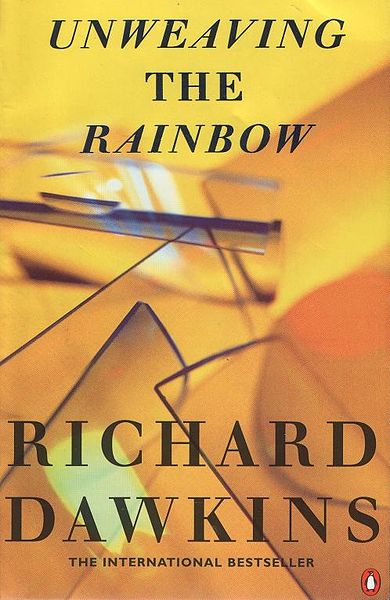Poetry of reality
2011/06/02 Carton Virto, Eider - Elhuyar Zientzia

The romantic poet John Keats starred in this anecdote and the person who proposed it, in 1817, gathered English poets, writers and painters at a dinner. There were Charles Lamb, William Wordsworth, Benjamin Haydon and Keats, and with these words from the previous paragraph Haydon recalled the memorable dinner in the letter he wrote many years later to Wordsworth.
Keats also wrote in the poem “Lamia” published in 1820 about Newton’s boldness: “Isn’t all the fascination escaped with the simple touch of cold philosophy?” he accuses that cold philosophy of “undoing the rainbow.” This poem gave the starting point to evolutionary biologist and writer Richard Dawkins for the writing of the book “Ortzadarra deseginez” (Unweaving the rainbow), and leaves accusations like that of Keats much better than I can do.
Dawkins talks about poetry and the fascination of science, because he states that science does not destroy any poetry, but discovers poetry in the models of nature. Science is poetry of reality for Dawkins, and I meet that vision. Because I do not understand what the dazzling one has to know that a certain refraction and play of reflection of the waves that occurs in the drops of water causes the decomposition of the white light and that we see the rainbow in the sky, in the jumps of water or in the waves. Doesn't it make it even brighter? Does life itself not appear more wonderful knowing that it is the result of the cellular activity of millions of molecules, processes and multi-cellular beings like us that interact?
I have no doubt that yes, but if I brought here this question about Keats' poem, it is not to fight anyone, but because I think it collects well the core of what I would like to explain when we talk about scientific culture. This is not only a collection of knowledge, but also a collection 
And it's the third leg, or probably the salsa that wets everything else, what Dawkins calls poetry. That is to say, that it appears and perceives as fascinating as the answers that science has given us when we ask ourselves about the universe, the world and about ourselves are published. We often engage in knowledge, but our scientific culture needs a lot of all the ingredients and is missing a lot, and it doesn't work with salsa, poetry. Keats' attitude did not die in the 19th century. Along with the romantic poets of the 20th century, fortunately, we have science poets in Feynmman, Sagan, Dawkins... And these quieter summer days that immediately begin are the perfect occasion to approach the teachers and surprise through their stories with the poetry of reality forever.
Published in Berria
The romantic poet John Keats starred in this anecdote and the person who proposed it, in 1817, gathered English poets, writers and painters at a dinner. There were Charles Lamb, William Wordsworth, Benjamin Haydon and Keats, and with these words from the previous paragraph Haydon recalled the memorable dinner in the letter he wrote many years later to Wordsworth.
Keats also wrote in the poem “Lamia” published in 1820 about Newton’s boldness: “Isn’t all the fascination escaped with the simple touch of cold philosophy?” he accuses that cold philosophy of “undoing the rainbow.” This poem gave the starting point to evolutionary biologist and writer Richard Dawkins for the writing of the book “Ortzadarra deseginez” (Unweaving the rainbow), and leaves accusations like that of Keats much better than I can do.
Dawkins talks about poetry and the fascination of science, because he states that science does not destroy any poetry, but discovers poetry in the models of nature. Science is poetry of reality for Dawkins, and I meet that vision. Because I do not understand what the dazzling one has to know that a certain refraction and play of reflection of the waves that occurs in the drops of water causes the decomposition of the white light and that we see the rainbow in the sky, in the jumps of water or in the waves. Doesn't it make it even brighter? Does life itself not appear more wonderful knowing that it is the result of the cellular activity of millions of molecules, processes and multi-cellular beings like us that interact?
I have no doubt that yes, but if I brought here this question about Keats' poem, it is not to fight anyone, but because I think it collects well the core of what I would like to explain when we talk about scientific culture. This is not only a collection of knowledge, but also a collection of knowledge that is an indispensable element of scientific culture. But it is not the only leg. A concrete way of looking at the world around us, of analyzing what we know and what we do not know, of questioning a certain attitude, and not any other, to question ourselves, ask ourselves, be critical and be skeptical... They are also the core of scientific culture, the second foot. Moreover, a real and strong scientific culture should be inseparable.
And it's the third leg, or probably the salsa that wets everything else, what Dawkins calls poetry. That is to say, that it appears and perceives as fascinating as the answers that science has given us when we ask ourselves about the universe, the world and about ourselves are published. We often engage in knowledge, but our scientific culture needs a lot of all the ingredients and is missing a lot, and it doesn't work with salsa, poetry. Keats' attitude did not die in the 19th century. Along with the romantic poets of the 20th century, fortunately, we have science poets in Feynmman, Sagan, Dawkins... And these quieter summer days that immediately begin are the perfect occasion to approach the teachers and surprise through their stories with the poetry of reality forever.

Gai honi buruzko eduki gehiago
Elhuyarrek garatutako teknologia



